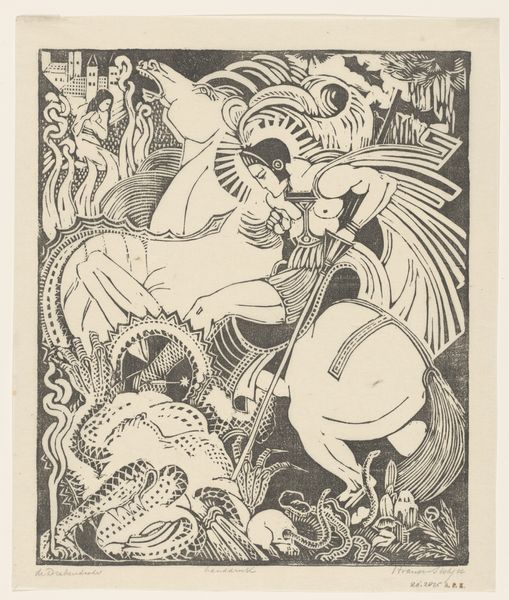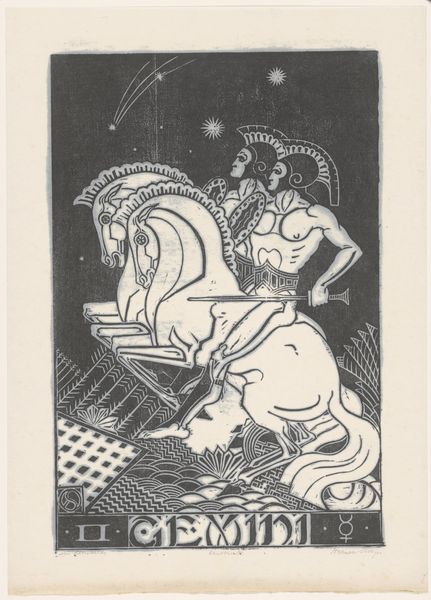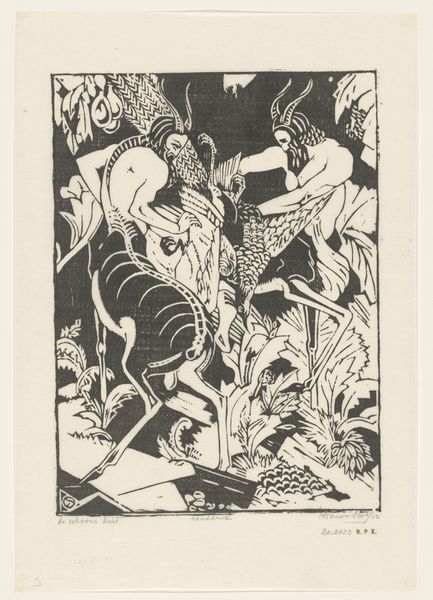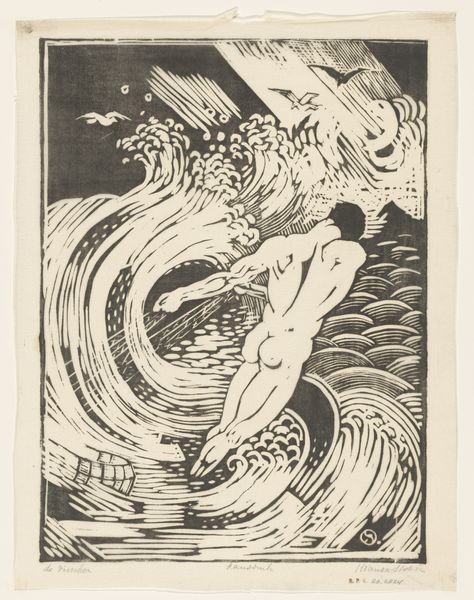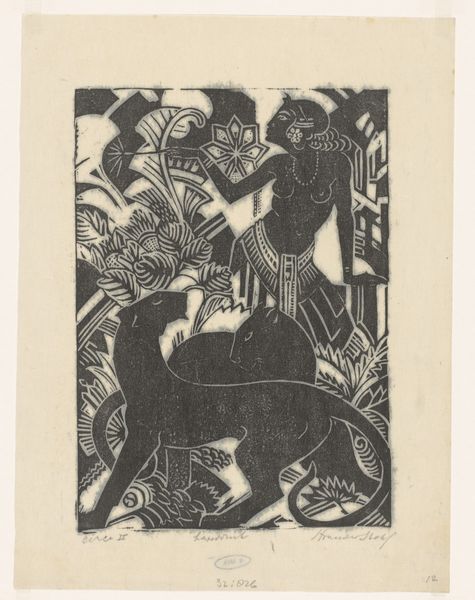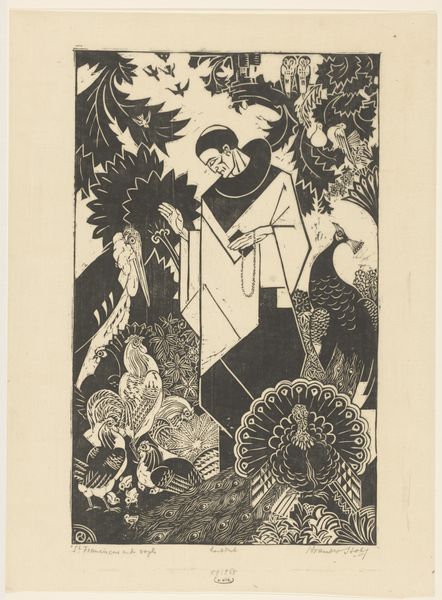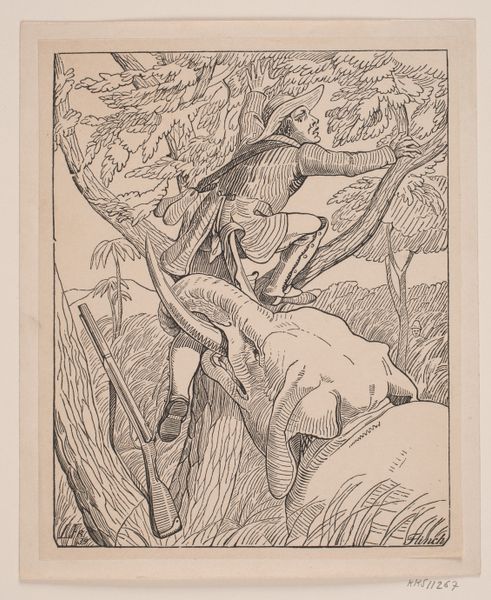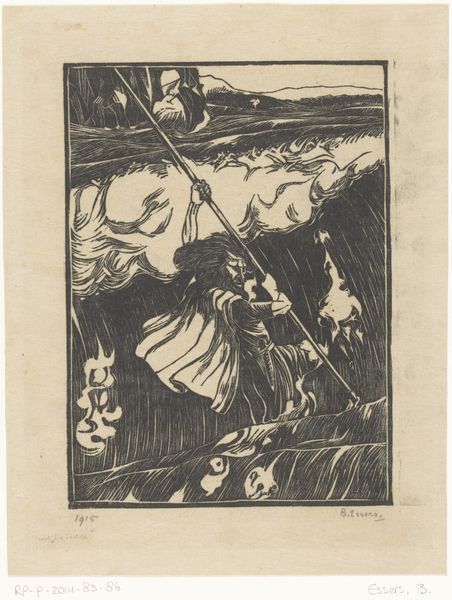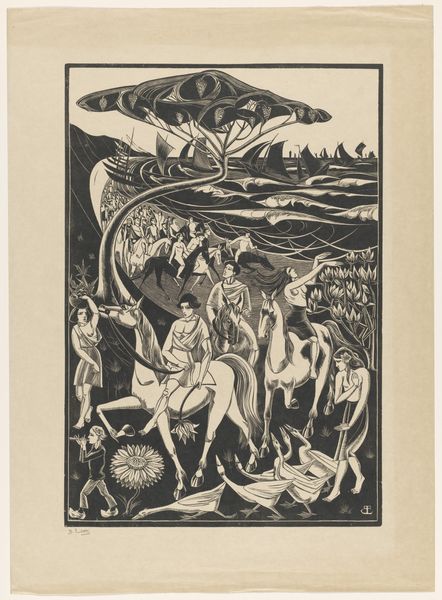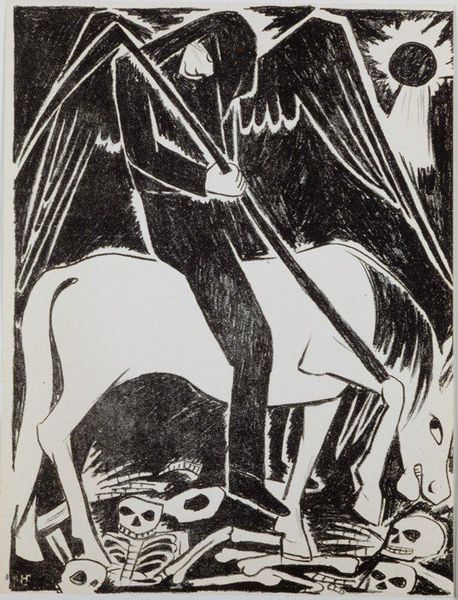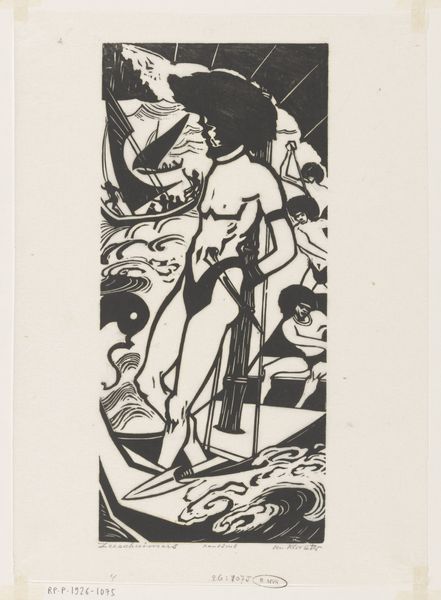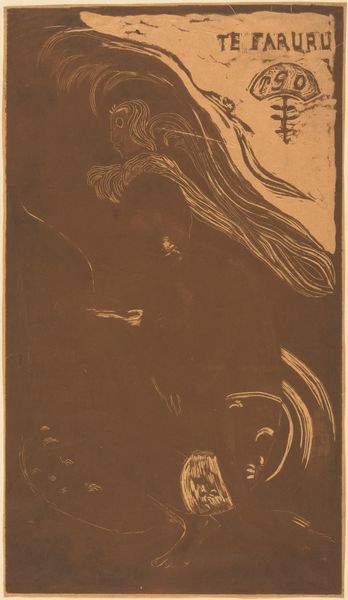
print, linocut
#
art-nouveau
# print
#
linocut
#
landscape
#
figuration
#
linocut print
#
geometric
#
symbolism
Dimensions: height 530 mm, width 403 mm
Copyright: Rijks Museum: Open Domain
Editor: This is “Sterrenbeeld boogschutter,” or "Constellation Sagittarius," a linocut print by Henri van der Stok, made sometime between 1880 and 1920. It feels so graphic and bold, especially with the strong contrast between the black background and the white figure. How would you interpret this work? Curator: It’s fascinating how Van der Stok merges Art Nouveau with astrological symbolism. This piece exists within a broader historical context where esoteric ideas were gaining traction in artistic circles. How do you see the interplay between personal belief systems and public expressions of art during this period? Editor: That's interesting! I hadn't really considered the spiritual context. I suppose the Art Nouveau style lends itself well to representing the mystical, with those flowing, organic lines and decorative elements. Curator: Exactly. Consider also the function of prints during this time. Reproducible and relatively inexpensive, they were powerful tools for disseminating ideas, including spiritual and political ideologies. It would be interesting to consider this work alongside others being circulated then and how those pieces and modes of distribution may have functioned similarly or differently. What role do you think accessibility played in the appeal of such imagery to a wider audience? Editor: Accessibility must have been key. People who couldn't afford original paintings could still engage with art and new ideas through prints like this. Did the Rijksmuseum play a specific role in showcasing such accessible art forms at that time? Curator: Museums began to shift from being exclusive spaces for the elite to institutions aimed at educating and inspiring a broader public. Displaying prints signaled a move toward democratizing access to art and knowledge. Thinking about the political implications of an artist incorporating symbolism, what can we tell about the intended audience and their place in society? Editor: I guess it suggests a growing interest in art beyond traditional academic circles, which is really cool. Curator: It certainly does! Examining how artists like Van der Stok engaged with these shifting social dynamics allows us to understand the multifaceted role art played in shaping public consciousness. Thanks for making me think. Editor: Thank you! I hadn’t thought of this print as participating in a larger sociopolitical discourse. That's definitely given me a new perspective!
Comments
No comments
Be the first to comment and join the conversation on the ultimate creative platform.
